 Patricia and I are traveling with Sabine for the drive to Sabine's country home in Eigenrieden for the purpose to meet artists, Greta and Iris to solidify our art project and maybe shoot some film. This is about 5 hours from Munich northeast bound. Sabine grew up in East Germany (formerly the German Democratic Republic-GDR) and has been extremely patient with answering all our questions regarding the way of life in a communist state and the change that occurred with integration to the West.
Patricia and I are traveling with Sabine for the drive to Sabine's country home in Eigenrieden for the purpose to meet artists, Greta and Iris to solidify our art project and maybe shoot some film. This is about 5 hours from Munich northeast bound. Sabine grew up in East Germany (formerly the German Democratic Republic-GDR) and has been extremely patient with answering all our questions regarding the way of life in a communist state and the change that occurred with integration to the West.The drive was beautiful along the autobahn. We drove at a good speed allowing the vehicles pursuing speeds of 180 to pass - we took our time and veered off along the way, stopping in Erfurt.
Erfurt was a very hip town and I was glad we stopped and checked out the local.
Sabine showed us the church centered in Efurt -- an amazing combination of Gothic, Romanesque, Ren. and Baroque. Amazing to view the parts that were added on and contrasted.
and of course it had its own biergarten~ It was the monks after all who where the keeper of the bier~

Separated by a column : the women of piety v the women grieved in sin....hmm
The busy town of Erfurt with its renaissance buildings. Each level of the building would expand in diameter going upwards, due to the taxes being charged just on the ground level, thus produce an optical illusion when viewing straight on. The block when taken in produced a haphazard V!
 the red building on the right -- juts out from first to third level for example. This was before we went and drank a beer~
the red building on the right -- juts out from first to third level for example. This was before we went and drank a beer~ popular beer maker and place to drink the red bull bier - and had absolutely nothing to do with caffeine.
popular beer maker and place to drink the red bull bier - and had absolutely nothing to do with caffeine.
a new friend
Side Plate: a German friend sent me this..

The Carpenter Apprentices - these two allowed their photos to be taken
 Since the Middle Ages, when crafts where organized in guilds, traveling has been an integral part of the education of any craftsman. Before one can become a Meister (master craftsman), one has to be a Lehrling (apprentice) with a Meister for usually three years. Upon completion of the Lehre (apprenticeship) one becomes a Geselle. The guilds for most crafts, in particular the ones for carpenters, masons etc., mandated that every Geselle had to travel for a certain number of years without returning to their hometown, except in case of family emergencies. During these years, Gesellen would travel from town to town seeking temporary employment with various Meister.
Since the Middle Ages, when crafts where organized in guilds, traveling has been an integral part of the education of any craftsman. Before one can become a Meister (master craftsman), one has to be a Lehrling (apprentice) with a Meister for usually three years. Upon completion of the Lehre (apprenticeship) one becomes a Geselle. The guilds for most crafts, in particular the ones for carpenters, masons etc., mandated that every Geselle had to travel for a certain number of years without returning to their hometown, except in case of family emergencies. During these years, Gesellen would travel from town to town seeking temporary employment with various Meister.
These travels are called Walz and are to be done in traditional dresses, which for carpenters and masons consists of a black corduroy suit, their traditional work clothes, a top hat or a bowler, depending on the trade, a bandana, used to wrap and carry all belongings on the road, and often a fancy walking stick. Traditionally, the Walz had to last three years and one day, during which time the journeyman walked from town to town. The perks of these journeys included one free meal at the local restaurant and sometimes a close encounter with the current employers wife, the Frau Meisterin. hmmm??
 In modern times, the Walz is no more a requirement for becoming a Meister, since we now have more effective ways of disseminating the skills and knowledge for a particular trade. In recent years, it has become more and more popular again with Gesellen in the traditional trades, and the people bothering you in your favorite bar are most likely legit and on the Walz (those corduroy suits aren't exactly cheap).
In modern times, the Walz is no more a requirement for becoming a Meister, since we now have more effective ways of disseminating the skills and knowledge for a particular trade. In recent years, it has become more and more popular again with Gesellen in the traditional trades, and the people bothering you in your favorite bar are most likely legit and on the Walz (those corduroy suits aren't exactly cheap).
Apart from the now optional Walz other bits of the medieval guilds that have survived the centuries are the requirement that you have to be a Meister to be allowed to have your own shop and take apprentices, the Meisterstück (master piece), a piece of work of high quality and demand that you have to produce in rder to become a Meister and the Richtfest.
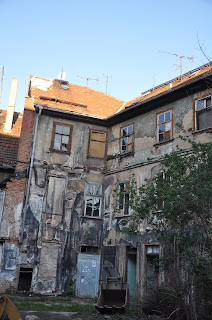
 old art house by University - that was originally built out over the water to avoid paying taxes on land occupied!
old art house by University - that was originally built out over the water to avoid paying taxes on land occupied!
_________________________________________________________________
_________________________________________________________________
Moving on.....The Arrival!
The Protagonists of the Project:- please view their work
Sabine Schlunk: http://sabineschlunk.com
Patricia Earnhardt: http://patriciaearnhardt.weebly.com
Myrna Pronchuk: myrnapronchuk.ca
Greta Moder: http://www.gretamoder.eu
Iris Kleinschmidt: http://staatstheater-braunschweig.de/wir/mitarbeiter/detailansicht/details//120880-kleinschmidt-iris/
The Meet: Sabine's Country Cottage
This was a perfect place to meet. Greta came in from Berlin and Iris and her sweet son, Emil, came in from out of town to meet us. We shared ideas, readings from Iris's copy of Julia Kristeva's "Powers of Horror", thoughts of performance and film. We cooked, drank, hiked, laughed, planned, dug up clay and made a video. A very successful weekend!
Field Notes on Julia Kristeva: Her writing is an extensive observation on the subject of abjection, drawing from the theories of Sigmund Freud and Jacques Lacan to examine horror and marginalization. According to Kristeva, the abject marks a "primal order" that escapes signification in the symbolic order; the term is used to refer to the human reaction to a threatened breakdown in meaning caused by the loss of the distinction between subject and object or -- between the self and the "other".
Kristeva defines the abject as “To each ego its object, to each superego its abject. It is not the white expanse or slack boredom of repression, not the translations and transformations of desire that wrench bodies, nights, and discourse; rather it is a brutish suffering . . .”. She continues on this motif further explicating in poetic terms her vision, but the core point has been made: within the Lacanian framework, the abject is a central waypoint on the definition of the relation of the personal ego with the greater world; it is not just the presence of disgust or horror, but that entire gamut of suffering we encounter.
mixing of clay
A Successful Weekend of Work
The Artists
missing: Iris & Emil in Photo!
______________________________________________________________
Forest by Sabine's Country Haus (house:)
____________________________________________________________
The Way Back Home to Munich (Florian had dinner waiting for all of us)
but we had yet a Few Stops...
First Stop: Monastery turned into a home for the aged along with two cats.
 wha?? What does this mean? (outside the church....?) (Possibilities: ? maybe it is....men only need directions to square dance?)
wha?? What does this mean? (outside the church....?) (Possibilities: ? maybe it is....men only need directions to square dance?)_____________________________________________________________________
_____________________________________________________________________
Second Stop: The Wall - East/West Germany
Noam Chomsky
“The smart way to keep people passive and obedient is to strictly limit the spectrum of acceptable opinion, but allow very lively debate within that spectrum....”
Sabine took us to the line by her place where the east and west was divided by two walls. The West: The German Democratic Republic was a state during the Cold War period (1949 to 1990) administering Germany that was occupied by Soviet forces at the end of WWII (the Soviet Occupation Zone of the Potsdam Agreement bound by the east by the Oder-Neisse line). The Soviet Zone surrounded West Berlin but did not include it - resulting in West Berlin remaining outside the jurisdiction of the GDR. The East was often described as a satellite state of the Soviet Union. Soviet occupation authorities began transferring administrative responsibility to German communist leaders in 1948 and the GDR began to function as a state on October 1949. Soviet forces remained in the country through the Cold War. The economy was state owned and central. Emigration to the West was a significant problem - many were educated youth, thus weakening the state economically. The government fortified its western borders and in 1961 by building the Berlin Wall. Many attempting to emigrate were killed by border guards and land mines. In 1989 widespread public anger over faking of election results and many had applied for exit visas. Many of borders restrictions were let down. In1990 GDR was dissolved and Germany was unified.
_________________________________________________________________
_________________________________________________________________
Third Stop: Famous Castles
This was a very beautiful castle up on a hill with lush decor and cheesy music. It was also once the home of the Rashneesh - German sect for a two year period. Not sure how but only could imagine...
________________________________________________________________________
________________________________________________________________________
Fourth Stop: Muhlhausen!
Muhlhausen was good to see. Sabine worked there in her youth as a clothing designer, drank plenty of martinis, and started the Theatre in the area. Good work.
 This entrance wall is the wall of the women but I am not sure why the arrow is directed to Patricia? hmm
This entrance wall is the wall of the women but I am not sure why the arrow is directed to Patricia? hmm
This gentleman didn't last long in the business he ran.
Secret Jewish window and candle signal used during wartime.
Sabine's factory where she designed clothing long ago.
My dream cruiser...
Could be a Pre-Raphael with sunglasses
These I see on a Brazilian Rosewood Guitar for some reason...
The church young Bach worked and had commissioned his work:
Mischa Maisky performs Bach Cello Suite No. 1 in G
House of A-Choo
Sabine's first theatre
_________________________________________________________________________
1. Interesting read: "Art in the Anthropocene - Encounters amongst Aesthetics, Politics,
Environments and Epistemologies", 2015
Why I liked it/ why was it relevant:
Excellent
reference on the subject with various short writings from many intellegencia who are
dealing with the subject of the changing planet and the human response to it. I think one that was one of my favorite (and have to admit I did not read all as of yet) - was " The Existence of the World is Always
Unexpected " – Jean-Luc Nancy in Conversation with John Paul Ricco. I loved this dialogue between Nancy and Ricco.
Jean-Luc Nancy 1940- French philosopher, work has a broad scope from On Kahara to Heidegger, from the sense of the world, and deconstruction of Christianity. Uber influenced by Derrida, Bataille and Heidegger - written books on Heidegger, Kant, Hegel and Descartes. One main-line theme in his work is being together in a contemporary society, dealing with questions of how can we still speak of a "we" or of a plurality without considering this "we" into a substantial and exclusive identity. What constitutes a "we" today?]
_____________________
“
Whereas until now, one use to describe ends (values, ideals and senses) as
being destitute, today ends are mulitiplying indefinitely at the same time as
they are showing themselves more and more to be substitutable and of equal
value”
To understand art as the “the privileged domain for an interrogation of
finality - in which aesthetic praxis is one of the principal means by which we confront
JLNancy states further there is a misunderstanding in the believe that capitalism could be transformed from within, being dependent on Marx who thought Capitalism was responsible for a historical mission to develop productive forces. Now Nancy hones a belief that capitalism may come to transform itself by collapsing under the weight of financialization or the effects of ecological devastation – (also Marxist). Transformation would mean displacing the general pattern of production and growth (primacy of production” **Human life becomes dependent upon products when thought of as production and away from unproductive.
Nietzsche - Umwertung der WertenIETZSHE – the reevaluation of all values, the reversal of the very meaning of existence.
“What’s undeniable is that humanity at large, and with it other living species and the mineral kingdom, entered conditions of existence totally at odds with what we must know that total catastrophe is possible. But if it takes place, it will be like the death of each individual—the end as opening onto an empty and dazzling infinity. The striking and obscure fact of an existence. The difference, for the end of the world, is that there won’t be any witnesses to mourn or greet the final glare. But this is very difficult to imagine—that there wouldn’t be anyone."““art” is above all the name of that which remains clear of ends and goals. “Art”—provided we do not confuse it with decoration, the aesthetic, the museum, or the art market, nor with subjectivity, “commitment,” etc.—means: technique without an end or goal. But the best way not to venerate art, seeing in it the only access to the “without end,”
is to consider the existence of people
J Luc-Nancy ”Religion is the machine of power and domination and thus inequality”
“this: great art arises when a great thought emerges. Nascent capitalism along with humanism generated extraordinary art (painting, music, poetry). There won’t be another great period of art until there’s a new spiritual force, equal to that of capital.”
__________________________________________________________________________________
Thoughts and Terms:
Intersectionality: - describe
how structural inequalities emerge through intersections of class,
race, ethnicity, gender, sexuality, age, ability, nationality, and,
yes, even species. Any
hope for distributional, representational, or ecological justice in the Anthropocene
depends on recognizing how these intersecting
structural inequalities reinforce the same political-economic
system that has brought on planetary ecological crisis. Challenging the
exclusion of particular humans from equal standing in global society thus
goes hand in hand with challenging a system that imperils all earthly
beings. In more concrete terms, this means that Feminist perspectives are
crucial not just for the sake of gender equity, but also for the equity and
efficacy of climate-change adaptation, urban sustainability, environmental
policy-making, biodiversity conservation, and many other Anthropocenic
challenges.
Thinking of the act of performance/storytelling: a continual looping back in time and
interruption
Tendrils:
feelers – sensatory in the feminine;
action word; Medusa froze the man who looked directly
Tentacular –
of relating to , resembling tenticals – outgrowth, process, appendage
Dr. Suess –
the Lorax:















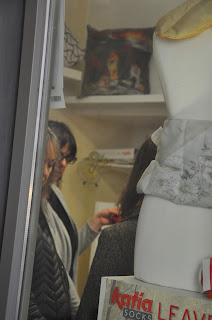














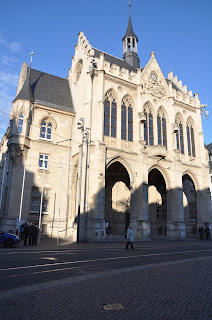

























































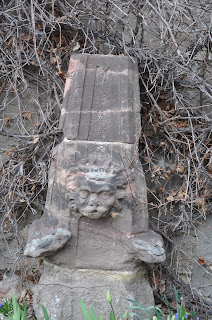





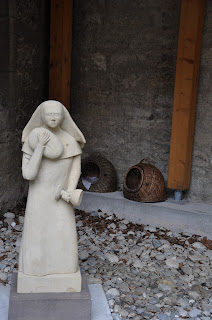


















































































No comments:
Post a Comment